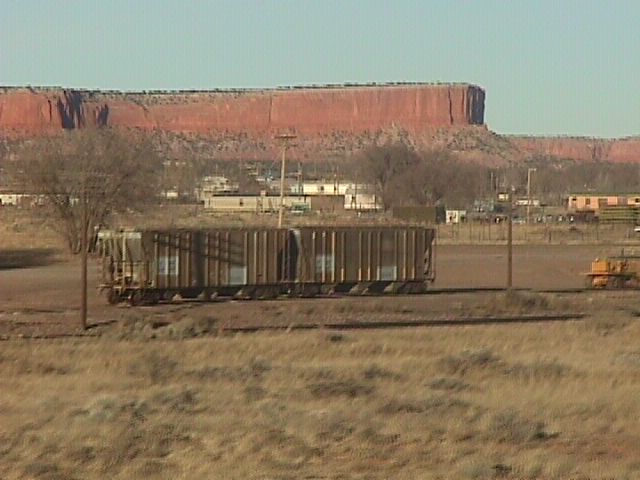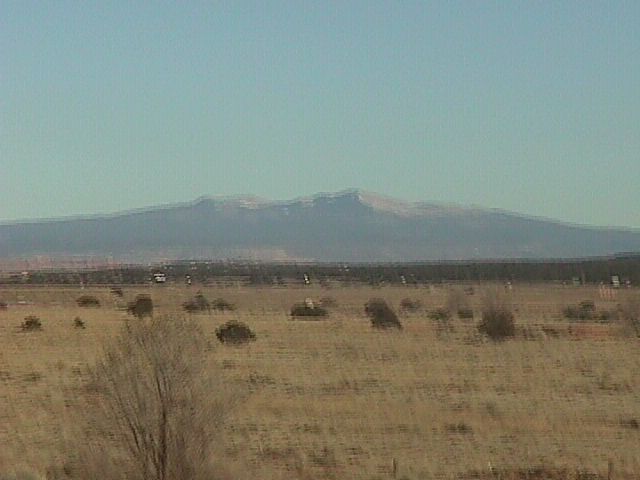|
The Navajo code talkers took part in every assault the U.S. Marines conducted
in the Pacific from 1942 to 1945. They served in all six Marine divisions, Marine Raider battalions and Marine parachute units,
transmitting messages by telephone and radio in their native language -- a code that the Japanese never broke.
The People who were brutally forced off
their homelands by the white man to take "the long walk" to Fort Sumner in 1864 were the very same ones whose descendents
chose to fight for the United States of America during World War II. These people were of the Navajo Nation and on June 3,
1940, the Navajo Tribal Council passed a resolution stating "that the Navajo Inkians stand ready as they did in 1918, to aid
and defend [the U.S.] Government..." (Paul 3). These people had every reason to hate the white-eyed, but when their country
was once again endangered of being invaded and conquered, they united with their old enemies as allies to defeat the new adversaries
of Germany and, particularly, of Japan. They served as communicators and fought from the Aleutian Islands to North Africa,
in Sicily and in Italy, and, most of all, in the Central and South Pacific.
The Navajo Indians also found problems
in the war itself. They were sometimes mistaken for Japanese and taken prisoner. They would then have to prove that they were
Navajo. Some Navajos had to have an escort so those mistakes like these were not made.
After using the code in battle,
they found a need for a larger vocabulary. They found that there were more words that they needed to use because of how frequently
they found themselves spelling these words. They also had to make the alphabet larger, because if the Japanese figured how
frequently each word was used they might figure out what letter was associated with it. So they contacted the Code Talker
school and told them about their concerns. The school then made the vocabulary from 200 word to 400 words. They also made
the alphabet much more difficult to decipher but adding more word to be associated with each letter. The more popular letters
were given 3 word and less popular letters were given 2 words. This meant the code talkers had more memorizing to do.
The
Navajo code talkers were eventually used more frequently. They proved themselves on various occasions. One time the Americans
had thought that the Japanese were in a certain area. The Japanese moved from that area and the one American group moved in.
The other Americans started firing because they thought it was the Japanese and the American group being shot at used the
radio to tell them to stop shooting. The American that were shooting only thought that it was the Japanese trying to trick
them so they continued. Finally they got a Navajo code talker on the radio and he told them to stop shooting and then realized
that they were shooting at their own men.
The Navajo code talkers are know to have sent over 800 messages in a 2 day interval
and all of the 800 messages that were sent in those two days not one had an error.
V. After the War
After the war when the Navajos returned
home it seemed as though there was not as much harm done mentally to the code talkers as there had been to others that had
served in the war. This is not because the Navajos didnt fight because they were right in the middle of battle with the other
soldiers. Also many of the code talkers were not used as code talkers when this program was first used, they just performed
the duties of normal soldiers.
At the end of World War II it was said that around 400 Navajos served the nation in this
capacity. That is why it is surprising that it took the Government so long to recognize these soldiers, which turned out to
be a very important part of the Battle of the Islands. Perhaps this is because the code was classified information until the
late 1960s.
It was many years after the end of World War II before the Navajo Code Talkers were recognized for their contribution
to the war effort. This happened because of the value that the code still had. This code was finally declassified in 1968.
It was only declassified then because electronic equipment was being developed that would be sufficient.
The Navajo Code
Talkers were also used in Korea in the 1950s and in Vietnam in the 1960s. This is how secure this code was it still was not
broken during these wars. It also shows how much confidence that the military had in this system of coding. These code talkers
were not nationally recognized until there was a reunion of the Fourth Marine Division Association in 1969. Then in 1971 President
Nixon awarded a special certificate to the code talkers to thank them for their patriotism, resourcefulness, and courage.
In early 1982, August 14,1982 was declared National Code Talkers Day, in honor of all the men who served in this capacity
during the war. On September 17, 1992 the Navajo Code Talkers of World War II were honored for their contributions. This was
done at the Pentagon, Washington D.C. where an exhibit in their honor was dedicated.
The Navajo Code Talkers made a major
contribution to WWII. There is lesson that we can all learn from them. They kept their culture though out all the hardships.
It is for this fact that the Navajo Code Talkers were such an asset to the U.S during WWII. If they would have given in to
the white man, they wouldnt have still had their language and the United States wouldnt have an unbreakable code to look back
on.
The secret is out on WWII Navajo Code-talkers
By Bill Papich, Chicago Tribune, March 17, 2000
GALLUP, N.M. During World War II, they spoke the Navajo language as a code to confound Japanese
eavesdropping on American military communications. Today, Hollywood and the country's second largest toy company listen to
them. When the surviving Navajo code talkers meet once a month in this railroad and ranching town bordering the Navajo Nation,
they talk about their newly found fame.
Two major motion pictures about the Navajo code talkers are in the works, and last month toymaker
Hasbro Inc. introduced Navajo Code Talker GI Joe, the company's first doll to speak a Native American language.
"All of a sudden, the code talkers are starting to be known all over the world," says Frank Thompson,
79, who was among the 400 to 450 Navajo Indians entering the Marines from 1942 to 1944 who were trained as code talkers.
Navajo is not a written language. That frustrated the Japanese who never broke the code and never
captured a Navajo code talker. Until 1968, existence of the code talkers was classified. The Pentagon was unsure whether the
Navajo language might be needed in another war.
The importance of the Navajo language represented a turnaround for the code talkers, most of whom
attended government schools on the Navajo Reservation. When they went to school students were punished if they spoke in Navajo,
a practice that continued into the 1950s. Teddy Draper Jr., whose father was among the code talkers, credits them with starting
a revival of the Navajo tongue.
"They had been beating us down, and then they use our language to win the war," the younger Draper
said. "In 1968, within months of declassification of the Navajo code, the Navajo people started pushing for their history,
their culture and their language in the schools."


|

